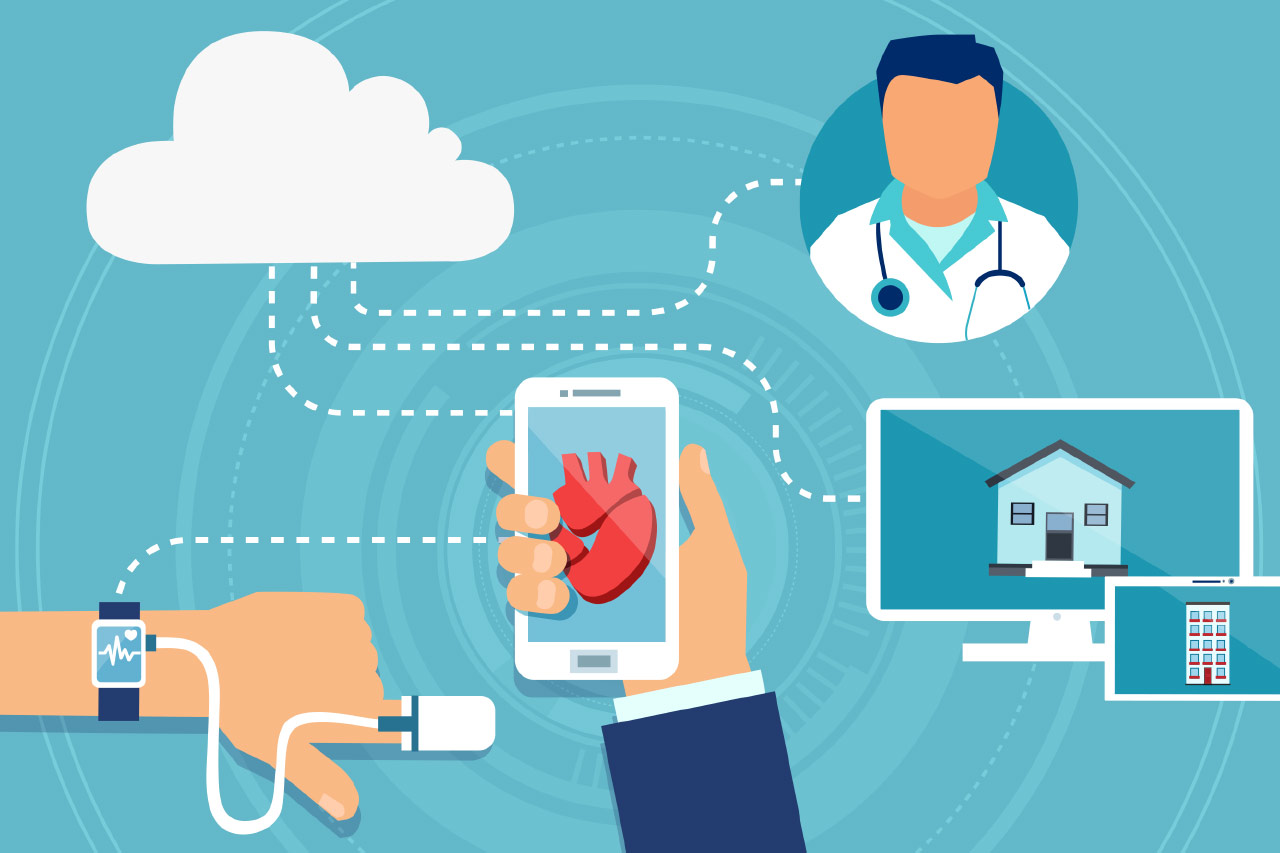Digital health in the post-Covid era: what does the future hold for telemonitoring?

The COVID-19 pandemic has shed light on telemedicine, particularly given the boom in the number of teleconsultations in France during the first lockdown. Telemedicine encompasses five regulatory acts: teleconsultation, teleexpertise, telemonitoring, teleassistance and medical regulation. In particular, telemonitoring deserves more attention: it appears today as a promising solution to improve the French healthcare system in terms of efficiency and for the patient quality of care. What is telemonitoring? What is its potential role? What are the lessons to be learned from COVID-19 crisis? Alcimed took a close look at the subject to address these questions.
Telemonitoring: a promising tool for the follow-up of chronic diseases
Telemonitoring, as defined in the public health code, enables healthcare professionals to remotely monitor and interpret patients’ health data (such as their blood sugar levels, heart rate or the evolution of their symptoms). These data can be collected automatically – using a connected medical device such as a blood glucose meter or a pacemaker – or by the patients themselves, by filling in their clinical vitals or by answering questionnaires.
Already in use for about ten years in therapeutic areas such as cardiology and oncology, telemonitoring is now particularly promising for the field of chronic pathologies. Indeed, population ageing and the consequent rise in chronic diseases, is imposing on the healthcare system a necessary transformation towards a care organization adapted to chronic monitoring. Telemonitoring is particularly relevant in the long term as a key tool for optimizing the monitoring of chronic patients.
It would especially improve the efficiency of patients’ pathways and quality of life, thanks to:
- A better prevention of the complications associated with these chronic diseases, and therefore a reduction in hospital admissions and emergency care
- A strengthened coordination among healthcare professionals involved in patient care, between city and hospital but also between general practitioners and specialists
- An in-depth knowledge about the patient’s disease and empowered patients, better involved in their follow-up
- More relevant care for the patient, based on more accurate follow-up data.
Within this context, the COVID-19 health crisis has strongly accelerated the evolution of practices towards greater digitalization, which constitutes a major action driver to accompany this change.
COVID-19 health crisis: a major boost for telemonitoring
While telemonitoring is becoming more and more widespread, the health crisis has especially accelerated its appreciation and adoption. In particular, the lockdown has increased awareness on the importance of telemonitoring in the continuous monitoring of chronic diseases and has accelerated the uptake of its tools by healthcare professionals and patients. For example, the French Department of Healthcare Provision (“DGOS”) has noted a significant increase in the number of chronic patients telemonitored as part of the ETAPES program (Telemedicine Experiments for the Improvement of Health Care Pathways). Today, more than 85,000 chronic patients are being telemonitored under this program, compared to 21,000 in May 2019. This was notably facilitated by two exemptions – granted in March and May 2020 by the Ministry of Solidarity and Health in response to the health crisis – which extended the eligibility criteria to ETAPES of patients suffering from heart failure or diabetes.
In addition, the benefits of telemonitoring have also been strongly highlighted by a specific use in the context of the health crisis. Indeed, unique telemonitoring devices have been set up to ensure home monitoring of patients infected (or suspected to be infected) by the virus. Particularly, COVIDOM platform – developed by Nouvéal e-santé with AP-HP – was used by hospital teams and general practitioners in France to monitor the evolution of their patients’ symptoms at home, through daily completion of self-questionnaires. This solution has proved to be highly useful in decongesting hospitals, making it easier to prioritize care for severe patients. It has also demonstrated enhanced city-hospital cooperation and patient involvement in their follow-up, which are both considered today as key drivers in improving the quality of care.
If telemonitoring has been strongly boosted during the COVID-19 crisis, it is above all a key instrument to drive the evolution of the healthcare system towards better management of chronic pathologies in the long run. In particular, it will make patient pathways more efficient (with fewer chronic complications and more coordinated follow-up) and improve chronic patients’ quality of life. You would like to embark on the adventure of telemonitoring? Alcimed can support you, among other things, in your technology scouting projects and patient pathway improvement projects.
About the author
Chloe, Consultant in Alcimed’s Healthcare team in France
Do you have an exploration project?
Our explorers are ready to discuss it with you